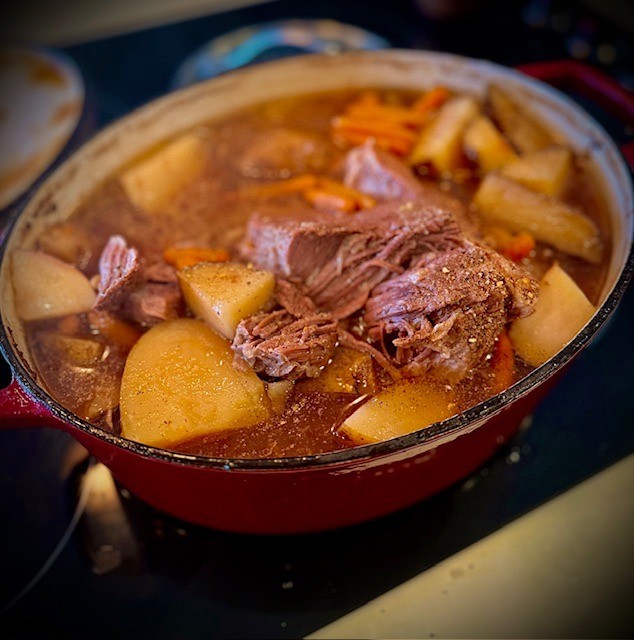3 things we're doing for healthier soil
posted on
September 13, 2024
I recently saw an interview with Neil Armstrong where he described the scenery as seen from space. “The sky is a deep black, the earth is the only visible object other than the sun that can be seen. The earth is quite beautiful from space, it's deep blue covered in lace (clouds), it's quite small and quite remote.”
From where we are sitting everything seems so big, too big for us to effect change. “There’s nothing little old me could do to effect change on a global level.”
Change your perspective. If it seems impossible to heal the world as a whole, change your world, your home, your surroundings. Change your small remote corner of the earth and do what the Boy Scouts would do: leave it better than you found it.
A few years back, my brother, Christian and his wife Maddie made a big decision for two twenty-somethings. They sold their house in Keystone, Colorado and moved back home to our family farm in Meadville, Missouri.
My grandparents bought the land that is now Parsons Creek back when disco was still on the radio (1970). They had the SAME EXACT DREAM for their family that Maddie and Christian now have for theirs, a simple life on the farm.
Christian then began doing his own research about how to farm efficiently. He read about the agricultural successes of our past and the shortcomings of conventional agriculture. (If you missed our last blog, A Tale as Old as Dirt, I wrote about these shortcomings.)
After lengthy pontification Christian paused to really work through his answer to this question:
How do we ensure history doesn’t repeat itself?
While I’d love to regale you with answers to all world problems, what I'm referring to is the history of our soil, our land, and our animals. Regenerative agriculture was the natural answer for our farm’s future.
Christian recognized the simple genius in mimicking the natural process, which are the pillars of regenerative agriculture.
But how DO we mimic nature? How do we leave our small remote corner of the earth better than we found it?
Cover crops.
According to the USDA, a cover crop is “any crop grown to cover the soil and may be incorporated into the soil later for enrichment.” Cover crops bring a lot to the table; they prevent soil erosion and annoyances like weeds and diseases, while also promoting water retention (good in a drought) and biodiversity.
Here at Parsons Creek, we use sorghum, triticale, cow peas and new to us this winter a diverse cover crop which contains winter peas, rye, rapeseed and turnips. We grow them in part because they feed our cattle, and provide coverage for our soil, but also because they act as a natural fertilizer. Plant life and biodiversity promote nitrogen production (turning dirt into soil). Nitrogen makes the ground fertile and ripe for planting, a farmer's delight.
Rotational grazing.
Let's bring it back to cattle. We are cattle people after all.
Our cows have a social calendar of sorts. We moooove our cows through pastures to prevent overgrazing, to use their manure as fertilizer, and to save on feed costs.
It’s a perfect cycle: the cow eats the grass then kneads its natural fertilizer into the field. The field then feeds the cow and provides cover for the land. Isn’t nature awesome?
This practice is called rotational grazing. Traditionally, rotational grazing looks like 1-6 head of cattle per acre, grazing multiple acres up to one year.
We’re taking things a step further in the regenerative direction by using a technique called intensive rotational grazing or mob grazing, as my grandpa calls it.
We are working towards 50- 60 head of cattle per acre. Now that's a party! Don’t worry, it's a mobile party. These cattle are rotated acre by acre every few hours. We’ll use simple poles and string to separate our paddocks. We’ll herd the cattle to the starting line and they are off to the races. By practicing intensive rotational grazing, we hope to eliminate the need for synthetic fertilizer all together at Parsons Creek.
No Till.
The next step is not destroying all the hard work Mother Nature just did. No tillage allows the soil structure to stay intact. Improved soil structure increases the soil’s ability to absorb and filter water which in turn reduces soil erosion, water erosion and prevents pollution from entering nearby water sources.
We use a no-till drill (shown above) a nifty piece of farm equipment to get our planting done. So instead of ripping up topsoil, we plant new cover crops right into the soil of our freshly harvested row crops. No muss, no fuss.
Cover cropping, rotational grazing, no-till…that's how we do it around here. Surrounded by family, all working together to promote regenerative agriculture. Being mindful of everything we do to leave things better than we found them.
Turning down our dirt road heading home last night I caught a glimpse in my rearview mirror. The sky was Carolina blue and the sun was ablaze. The kind of red that made you throw your car in park so you could stop and take a good long gander.
What a beautiful small remote corner of the earth we at Parsons Creek get to call home.




